The helicopter is an aircraft that can rise straight up and hover in the air. It can also fly backwards or sideways. Instead of wings, helicopters use large, propeller-like rotors to lift them.
A US police Bell 206 helicopter
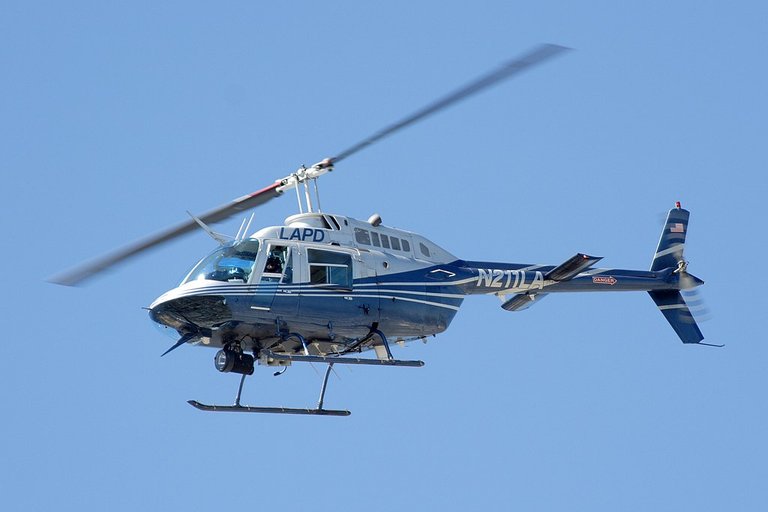
source
The helicopter was developed to do things no other aircraft can. A helicopter can move in any direction and can land or take off in small clear areas or on rooftops. For these reasons, helicopters are used for rescue, mail and passenger transportation, pipeline and electrical line inspection, and police work. Farmers use helicopters for spraying insecticides and fertilizer, and also for cloud seeding. They even use the downward draft from the rotor blades to circulate warm air through fruit orchards to prevent frost damage.
Helicopters are very useful for many jobs. These aircraft are flown for highway traffic control, to carry passengers, pipeline inspections, and many other interesting uses. Heliports are often built on roofs or buildings while helipads can be a portable landing spot and may be located at a heliport or airport where fuel, air traffic control and service facilities for aircraft are available.
Rooftop Hospital Heliport
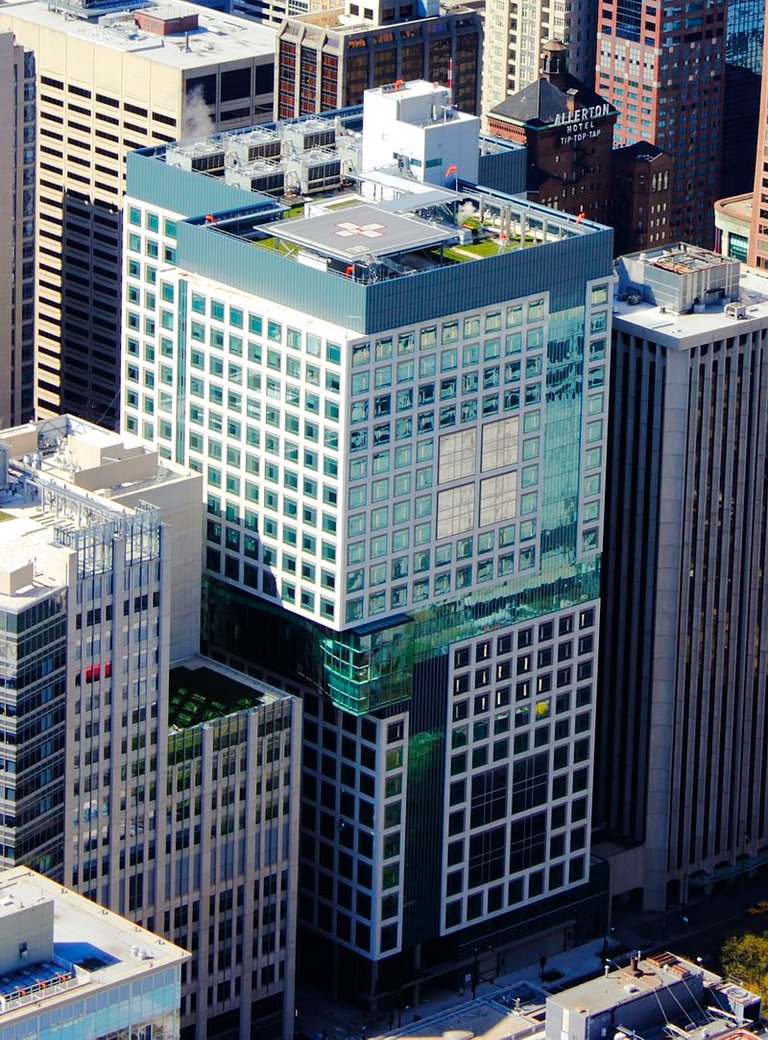
source
Heliport markings
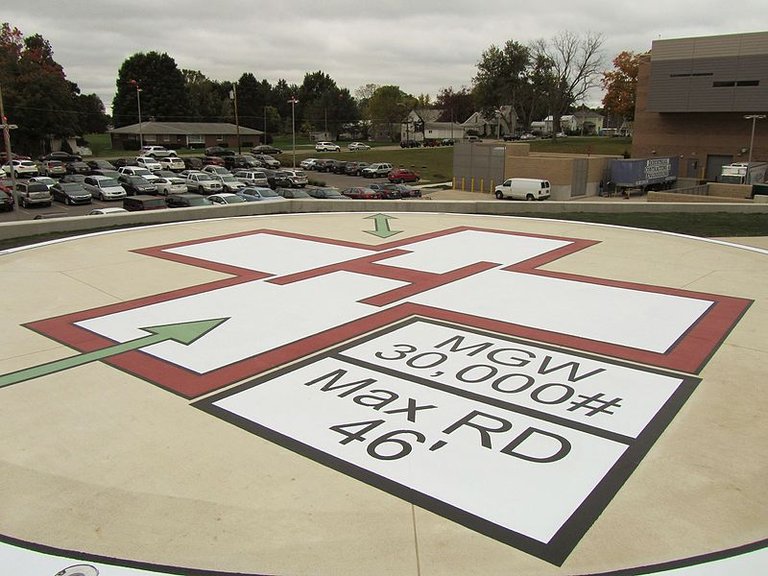
source
A helipad in UK
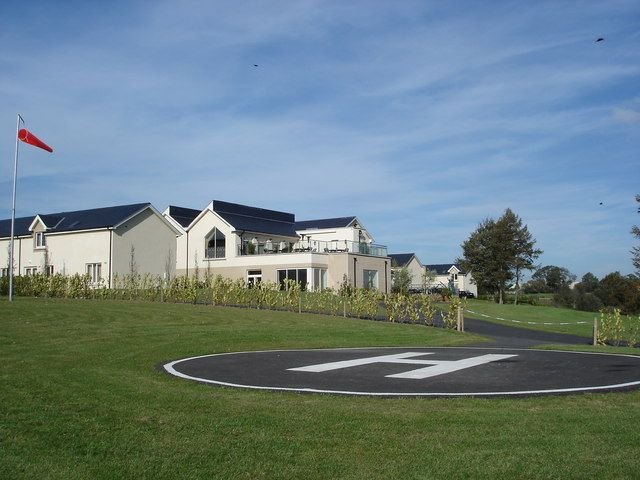
source
Helicopters may have piston, turbojet, or ramjet engines. Ramjets may be mounted on the rotor tips, or the exhaust of a turbojet may be released from tubes in the tips.
Piston and turbojet engines turn the rotors through gears in much the same way as an airplane's propeller is turned.
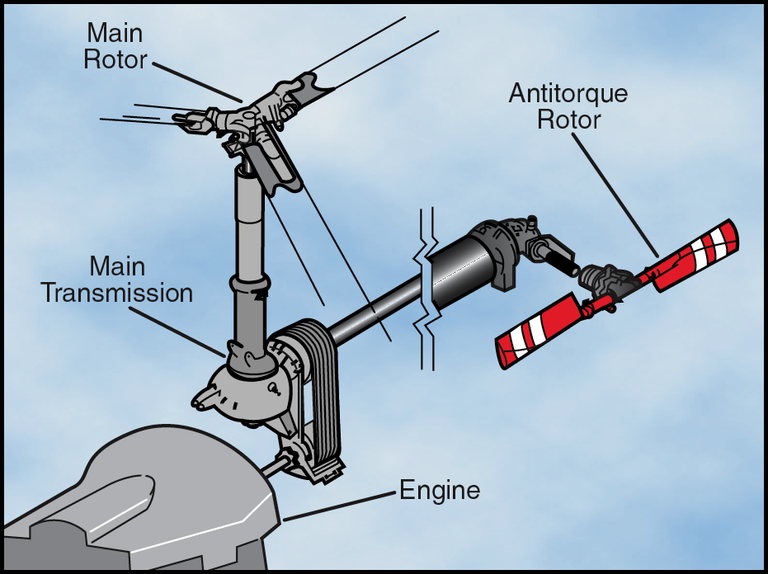
source
The more powerful turbojet engines have made several advanced designs possible. Ten-ton loads can be picked up by the giant skycrane. The fixed rotor design has the rotor blades firmly attached to the hub for greatly increased stability.
Picture of the Sikorsky CH-54 Tarhe / Erickson S-64 Skycrane carrying a truck
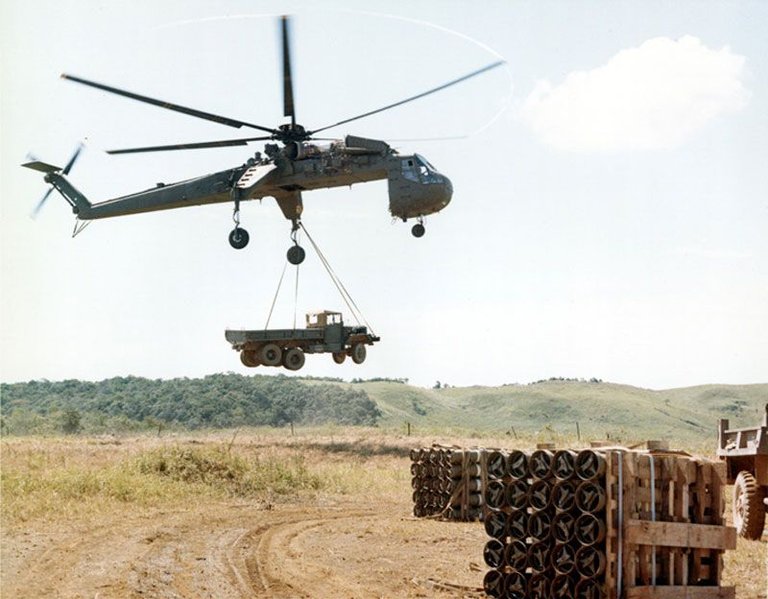
source
Compound helicopters or now commonly called gyrodynes have a forward propulsion system such as a pusher propeller or auxiliary jet engines for higher speeds, up to 300 mph. Interesting research is under way to develop basic lift in forward flight, while the rotor blades are stopped, folded, and stowed until required for VTOL (vertical takeoff and landing) operation.
Fairey FB-1 Gyrodyne

source
The Fairey Rotodyne Y in 1959
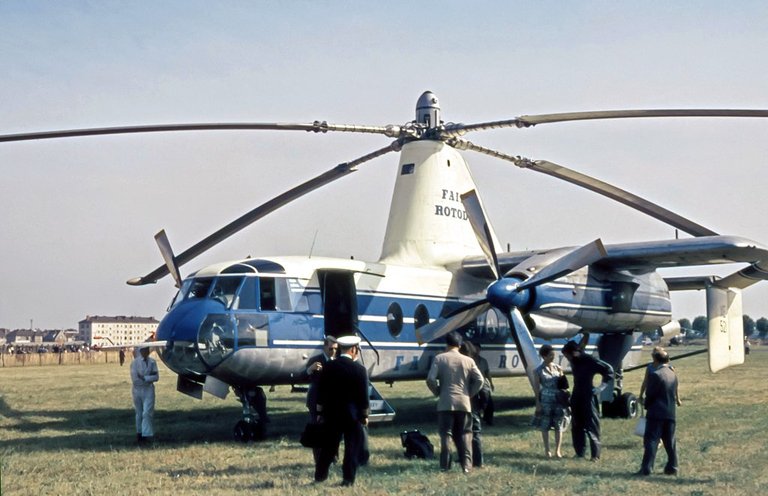
source
Helicopter Flight Controls

source
A helicopter has four basic flight control inputs. These are the cyclic, the collective, the anti-torque pedals, and the throttle.
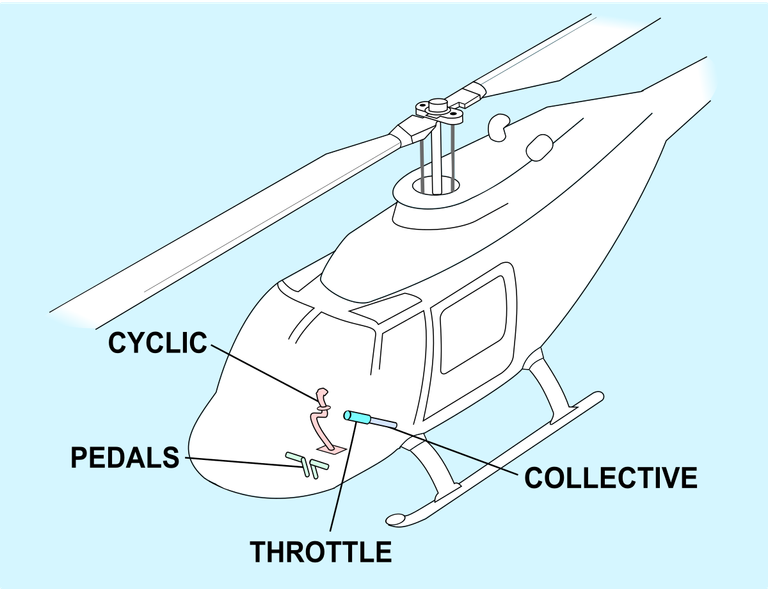
source
The flight control system of a helicopter is quite complex. The cyclic pitch control stick is located between the pilot's knees. It is used to direct the helicopter's horizontal movements. The movement, in the same direction as that of the stick, is accomplished by varying the pitch or angle of the individual rotor blade so that the blade moving in the desired direction of flight takes a smaller "bite" of air, while the opposite blade takes a bigger "bite" and pushes the helicopter forward. As the blades rotate, their individual pitch is constantly changing.
Cyclic controls changing the pitch of the rotor blades.

source
The collective pitch control or also known as collective lever is another "stick" at the pilot's left side. This controls the vertical direction of flight by varying the pitch of both rotor blades at the same time. The engine throttle is also located on this control stick/lever. The raising of this stick giving increased pitch to the rotor blades is combined with speeding up the engine causing the helicopter to rise. To descend, the blade pitch is decreased by lowering the stick and at the same time reducing the engine power with its twist grip.
The collective changes the pitch of all of the rotor blades simultaneously and by the same amount, thereby increasing or decreasing lift.
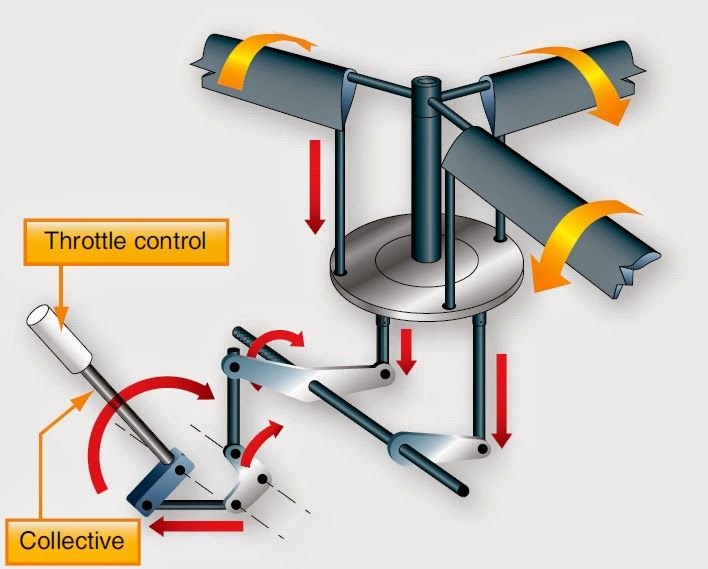
source
The purpose of the throttle is to maintain enough engine power to keep the rotor rpm within allowable limits in order to keep the rotor producing enough lift for flight. In single-engine helicopters, the throttle control is a motorcycle-style twist grip mounted on the collective control while dual-engine helicopters have a power lever for each engine..

source
Two foot pedals or usually called anti-torque pedals are used to control the pitch of the small tail rotor blades. This pitch change has the same effect on the helicopter's flight as the rudder of a conventional aircraft in controlling right or left movement about the yaw axis.
The anti-torque pedals, located on the cabin floor by the pilot’s feet, control the pitch and therefore the thrust of the tail rotor blades or other anti-torque system.
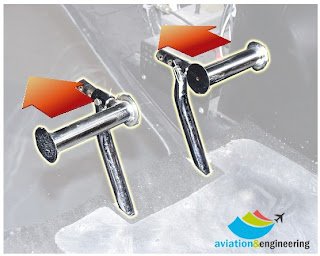
source
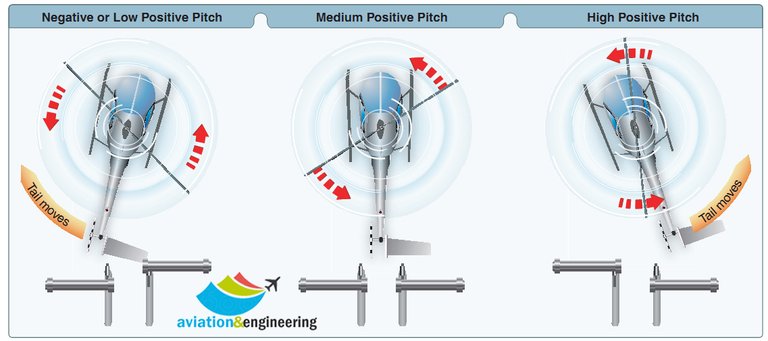
source
If a helicopter engine stops, the blades keep turning like a falling maple seed, and the aircraft settles to a safe landing. This is called autorotation.
Airflow through a helicopter rotor. Above, the rotor is powered and pushing air downward, generating lift and thrust. Below, the helicopter rotor has lost power, and the craft is making an emergency landing,
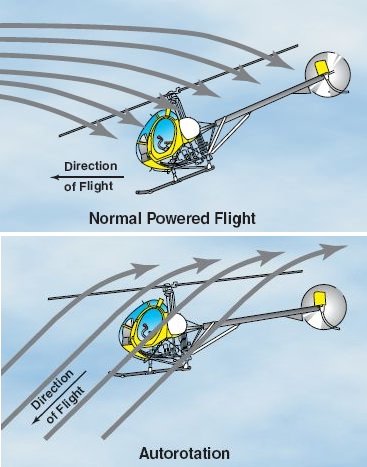
source
The helicopter is not a new idea. Leonardo Da Vinci made the first sketches, and Igor I. Sikorsky built the first practical helicopter in several advanced helicopter designs possible, including the high-speed compound helicopter and the giant sky crane.
Helicopter-like sketch by Leonardo da Vinci (1452 - 1519)
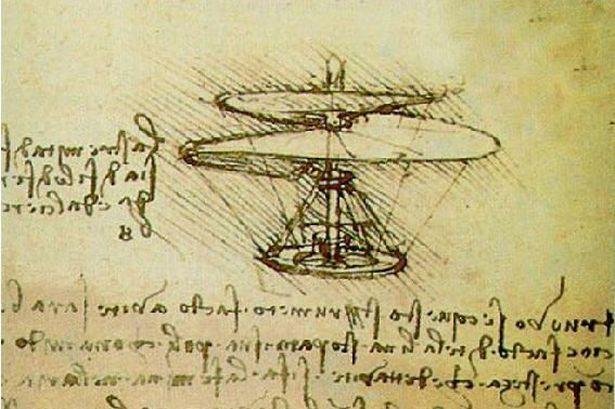
source
Sikorsky at the controls of his prototype VS-300 helicopter for its maiden tethered flight in September 1939.
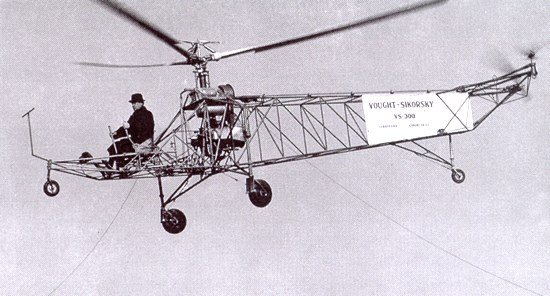
source
Interesting research is under way to develop a composite aircraft which will use rotor blades to take off and land. In forward flight, this aircraft will use stub wings to provide basic lift. The rotor blades will be stopped, folded, and stowed until required for the landing operation. However, stub wings is present in the configuration of the Russian Mil Mi-24 and UH-60 attack helicopters that can provide up to 25% of total lift at speed and important stability to counter tendency to Dutch Roll. Stub wings in these military helicopters are also being used for hanging added ammunition and other firepower.
Russian Mil Mi-24
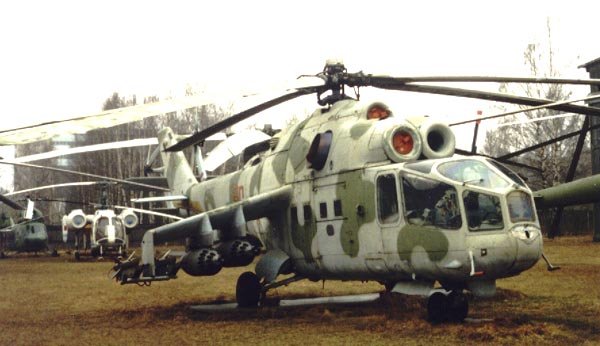
source
Sikorsky UH-60 Blackhawk

source
One of the world's most advanced helicopters in service until the current generation is the Boeing AH-64 Apache. It is an attack helicopter with a four blade rotor and twin turboshaft engines. It also has an advanced target acquisition, night vision systems, and highly advanced firepower. The AH-64 has a large amount of systems redundancy to improve combat survivability. The cockpit arrangement is a tandem-type, which means it can be individually maneuvered by two crews or pilots.
Boeing AH-64 Apache

source

References:
https://en.wikipedia.org/wiki/Helicopter
http://www.helicopterpage.com/
http://aviationweek.com/vertical-flight/how-helicopter-has-developed
http://www.danubewings.com/controlling-helicopter-flight/
http://www.aviationandengineering.com/2013/09/helicopter-flight-controls.html
http://www.helicopterpage.com/
http://aviationweek.com/vertical-flight/how-helicopter-has-developed
http://www.danubewings.com/controlling-helicopter-flight/
http://www.aviationandengineering.com/2013/09/helicopter-flight-controls.html
As a follower of @followforupvotes this post has been randomly selected and upvoted! Enjoy your upvote and have a great day!
Awesome breakdown! I remember as a kid thinking that once the blades spun fast enough they just disapeared... no idea how I got this idea in my head :/
Me too! I remember my childhood thinking the engine of the airplane as a missile, firepower or something. Thanks for reading my post.
Good introduction to the subject.
I enjoyed reading it.
Thank you very much @irelandscape! My adjustment
I loved reading this. The article is very comprehensive and thoughful.